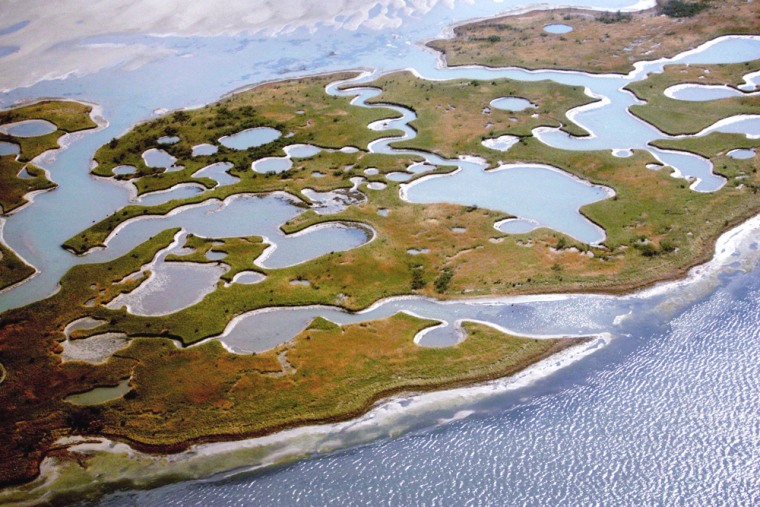The nation's second oldest national wildlife refuge, a chain of barrier islands southeast of New Orleans, is in danger of being lost unless the islands are restored, the U.S. Fish and Wildlife Service says.
The Chandeleur and Breton islands have been battered by hurricanes in the past four years and they took a pounding from Hurricane Katrina, which "reduced the islands by one-half of their pre-storm size," the agency said in a new report.
The nation should pour money into restoring the refuge, the report said.
"Current management has not been able to keep up with the rate of land loss," the report said. "Circumstances are now at a turning point. We can either let things continue to deteriorate or we can expand restoration efforts."
The islands form an arc in the Gulf of Mexico southeast of the swamps and marshes that surround New Orleans. Remote and accessible only by boat and aircraft, the islands are important nesting grounds for a variety of birds, chief among them brown pelicans, terns and black skimmers.
But the beauty of the islands — captured by Gulf Coast wilderness painter Walter Anderson — may be lost forever unless expensive restoration takes place.
Katrina was quite possibly a "tipping point," said Abby Sallenger, an oceanographer with the U.S. Geological Survey who has studied the islands' shorelines.
Two years after the storm, the shoreline continued to get washed away and there was little evidence that sand was piling up in dunes, he said. A more recent survey indicated some dunes might be forming, which would be a positive sign, he said.
"There's no guarantee that they're going to last," said Jack Bohannan, the refuge manager.
The islands have changed dramatically since President Theodore Roosevelt designated them a national wildlife refuge on Oct. 4, 1904 to stop destructive bird hunting.
In 1915, people lived on the islands in a settlement that included a school and there were reports of trees growing. Not anymore.
What was once a continuous strip of land, where beaches were backed up by high dunes and shrubbery made up of black mangrove and groundsel bush, is now a patchwork of low-lying sand bars rising just above the sea.
Because the islands are so far from shore, restoration would be expensive and would cost tens of millions of dollars, Bohannan said. Scientists are studying what sections could feasibly be restored, he said.
Mark Schexnayder, a coastal adviser for Louisiana State University's Sea Grant Extension, said the nation and state need to find the money to save the islands regardless of the cost.
"It's got historical significance and it's the largest rookery for our state bird, the brown pelican," Schexnayder said. "I'm not willing to fold the tent and go home."
But the fate of the islands may be beyond whatever humans can do, the report suggested.
"After the devastating 2005 storm season, serious concerns now exist regarding the amount of recovery possible," the Fish and Wildlife Service report said, noting that the rise in sea level is a threat.
Friday's report was part of the agency's nationwide effort to draw up 15-year conservation plans for every wildlife refuge by 2012.
